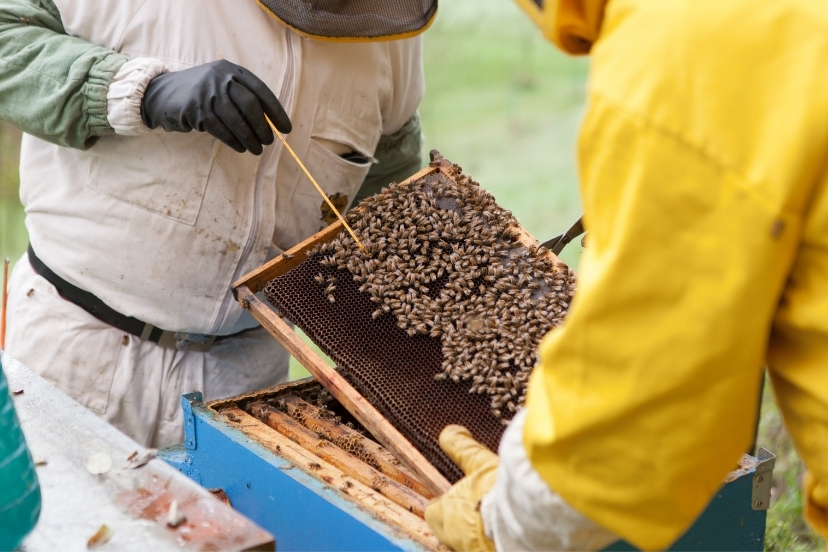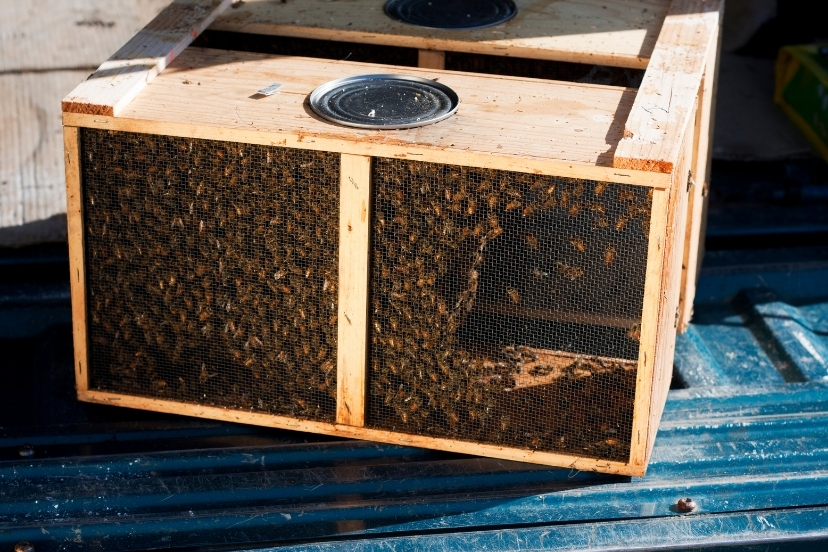Missing bees, known as Colony Collapse Disorder, is a problem that most people have heard of by now. The disappearance of honey bees around the world has been big news – and for good reason.
For the past several years, honey bee deaths have been occurring at unprecedented rates. Large scale commercial beekeepers have suffered losses that are unsustainable long-term.
It’s become quite common for beekeepers to lose a third to a half of all of their colonies during a single winter. And loss rates of up to 90% have been reported by some beekeepers.
What’s Happening?
Why are honey bees disappearing in such devastating numbers? The truth is that nobody is really sure just yet. Research is being conducted at a feverish pace, but nobody has yet determined with absolute certainty the cause of this terrible problem.
But there are some ideas…
Colony Collapse Disorder: The Symptoms
When a bee colony succumbs to colony collapse disorder, it really is a case of missing bees. Bees just disappear from the colony.
A bee colony that seemed fine going into winter suddenly suffers a population collapse. All or most of the bees in the colony just disappear; the beekeeper finds a hive with empty combs.
In some cases all of the bees are gone, and sometimes the queen remains with just a handful of bees. All of the other thousands of bees that populated the colony going into winter are gone.
Winter Losses Aren’t Anything New…Why are bees going missing?
Winter losses have never been uncommon in beekeeping. Colonies sometimes run out of honey and starve before spring. Or they succumb to one of the many diseases or pests that can afflict honey bees.
But when traditional winter losses occur, there’s always a very obvious indication of the tragedy – bee bodies.
If a colony starves to death during winter, for example, the beekeeper will find a mass of dead bees clustered together. If the colony dies from any other traditional cause, the bodies of the bees remain in the hive.
But with bee colony collapse, the bees are just gone. They leave the hive to go off and die alone, for reasons yet unknown.
The Cause Of The Missing Bees Remains Unknown…
Colony Collapse Disorder (CCD) is a very alarming problem. We depend upon honey bees for about a third of our food supply. If honey bees were to completely disappear, the world would be thrown into chaos as food supplies dwindled.
And though there are other pollinating insects, they would not be able to fill the void left by disappearing honey bees. Even now, growers of many crops are having trouble getting enough honey bees to pollinate their crops due to the losses that beekeepers have suffered.
So scientists have been working frantically to find the cause and solutions to the problem of the missing bees. Millions of dollars have been applied to researching the cause of CCD.
But as of this writing, the cause has not yet been found. There are some theories, though. Scientists believe that some or all of the following problems, separately or in combo, may contribute to the problem of the missing bees:
Worn-Out Bees
It’s been common practice for many decades for large-scale commercial beekeepers to winter their colonies in southern regions where the winters are mild, and then truck them to locations where the bees are needed for pollination or to gather honey crops.
A beekeeper might winter his colonies in Texas, for example, and then haul them to California in early spring to pollinate the almond crop. Some scientists have theorized that this process is just wearing colonies out, making them unable to sustain their population.
And because of this practice, bee colonies from all around the country are often brought together in one location for pollinating purposes. This can facilitate the spread of disease and pest problems. Migratory beekeeping can’t be completely to blame for CCD, though, because bees have also gone missing from many colonies that are never moved.
Malnourished Bees
In many of the migratory beekeeping operations as described above, it’s routine to feed colonies high-fructose corn syrup and pollen substitutes. Some scientists fear that this diet does not provide bees with all the micronutrients that they would get from honey and natural pollen, leading to a breakdown of the bees’ health.
Some also feel that large-scale factory farming may be causing a deficiency in the diets of honey bees. Large farms tend to grow huge plots of a single crop. This reduces the diversity of plants available for forage for bee colonies that are located on or around the farm.
The speculation is that bees need a diversity of foods from different plants to supply the full range of nutrients that they require, and that farming monocultures are robbing them of that needed diversity.
Pathogens and Pests:
There are many parasitic pests and diseases that can afflict honey bees. Most of them have been around for a long time. But some are fairly new.
Some scientists feel that problems such as Varroa mites and Nosema Ceranae (a pathogen that causes bees to become ill) are combining with the other problems listed here to overwhelm the bees.
Pesticides and Other Toxins in the Environment
Pesticides have long been a problem for beekeepers. Honey bees are insects, quite obviously, and any insecticide sprayed on crops will kill or sicken bees that are foraging those crops.
In the past, a colony suffering from pesticide exposure would show obvious signs, such as piles of dead bees in front of the colony entrance. But some of the newer pesticides that are available are suspected of causing losses in a more insidious manner, resulting in CCD and missing bees.
A pesticide called Imidacloprid is one of these. Some scientists suspect that the missing bees are a result of years of cumulative pesticide exposure.
And some suspect that the chemicals that some beekeepers (not all) use to control Varroa mites (a honey bee parasite) are, ironically, part of the problem.
By The Way, Feel Perfectly Free To Use Your Cell Phone…
The problems listed above are just some of the problems suspected of causing the mysterious case of the missing bees. I’ll keep an eye on the situation, and should a concrete cause and solution to this problem be found (hopefully soon!), I’ll be sure to report it right here on this page.
In the meantime – in case you’ve read of the crackpot theory about cell phone towers causing the missing bee problem – feel perfectly free to use your cell phone. Making a call on your cell phone is NOT wiping out honey bees!


